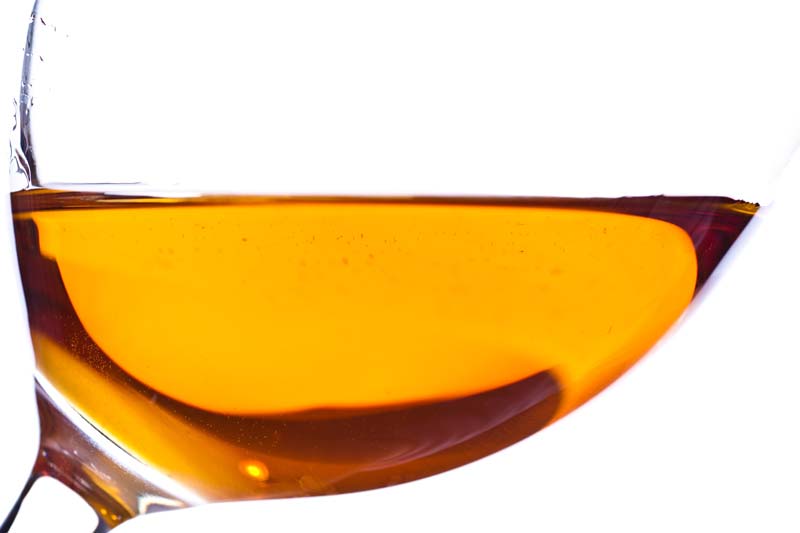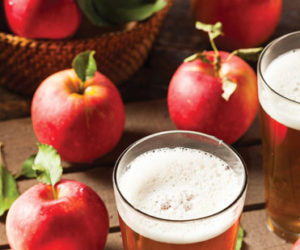Stone fruits are categorized by the pits found in their core. Think cherry, apricot, plum, peach, mango . . . even olives are considered stone fruits. In botany they are known as drupes and the stone contains the seed while the outer flesh and sugar is what the plant uses to coax a member of the animal kingdom to eat it and spread its seed afar. And of course we as winemakers can use the sugar, plus some yeast, to produce wine. Let’s run through some of the main concepts for crafting wines with stone fruit.
Sourcing The Stones
Just like with grape wines, there is a whole range of possible routes you can take: Fresh fruit, frozen fruit, juices, purees, concentrates, etc. Using locally picked or homegrown fresh fruit is generally seen as the pinnacle, but frozen fruit is a close second, as they will be picked at the height of ripeness before being frozen. Fresh fruit found at the grocery store will often have been picked well before ripeness in order to allow the fruit to ripen during shipping, which means it wasn’t allowed to fully mature in character.

Aseptic juices are another really good pick as they are about as close to fresh juices as possible without having to deal with the actual fruit. An example of aseptic juice we are all familiar with is not-from-concentrate orange juice. Buying locally sourced, unpasteurized, refrigerated juice is typically the best juice though. You can make wine from pasteurized juice, but the pasteurization process does drive-off or chemically alter delicate aromatics.
Next up are concentrates, which can make good wines if used properly but are often better used to enhance the fruit character in the backsweetening process. If you want to give a fruit boost to an apple cider, the easiest thing to do is add in a can of frozen concentrate from the grocery store after stabilizing but before bottling. Unfortunately it’s not as easy to source a peach or plum juice frozen concentrate, but a range of concentrates typically are available at larger wine supply stores.
There are extracts and flavorings available as well, which can come in handy if your wine needs a boost of fruit character or you’re looking to simply add an element of a fruit’s character to a grape wine. For example, adding a little blueberry extract to a white Merlot might elevate that porch-sipper a level.
Keys to Stone Fruit Wines
There are two things that have to be discussed when dealing with any wines outside of those produced by Vitis vinifera grapes: Starting Brix and acidity (pH). While stone fruits generally have lower sugar levels than wine grapes, they’re often not too far behind and only moderate chaptalization (the addition of sugar) may be required to bring the alcohol levels up to standard wine strength. For example, let’s say vinifera grapes are roughly 23 °Brix (23% sugar) when harvested; mangoes are typically 14 °Brix, cherries and plums are generally 13 °Brix, and standard peaches are 8 °Brix (these are highly variable though). Compare that to raspberries that are more typically 4 °Brix while strawberries are around 5 °Brix. Chaptalization is typically still recommended for stone fruit wines because higher alcohol wines are less susceptible to microbial problems.
Acidity may also be an issue needing to be addressed. If you have the ability to test for pH it is recommended for microbial stability issues. Targeting white wine’s pH levels of 3.2–3.4 is a good starting point as most of these wines will have low to no polyphenols to help stabilize the wine. Malic acid is the main acid of stone fruits and it’s recommended to sulfite your wine after fermentation to suppress possible malolactic bacteria activity.
Cherry Wines
This was my first love in the fruit wine category. Sour cherries (sometimes called tart cherries) are the preferred cherry type for making wine. Sugar levels in this category can range from 8 °Brix up to 22 °Brix depending on variety and growing season. Total acidity typically ranges from 1.3–2.3 g/L. These numbers are a pretty good starting place for winemaking. Add in the fact that cherries provide a modest level of polyphenols, and it is easy to make the case for why cherry wine is so popular. Sweet cherries can also be used; the main difference between the two is that sweet cherries have less acidity and higher pH. Be sure that pits are discarded prior to fermentation if using fresh fruits as cherry pits (and some other stone fruit pits) contain low concentrations of a compound that can be converted to toxic hydrogen cyanide.
Peach/Nectarine Wines
While generally lower in sugar than cherries, peaches and nectarines are another great choice for a stone fruit wine. Since their character is a little more subtle, they can make great blending partners with white grape wines. Extracts and flavorings can be utilized as well if fruit character is lacking after fermentation and aging. Fully ripened peaches and nectarines can allow sugar levels to get up towards 14 °Brix in some varieties, while pH levels generally range from 3.3 up to 4.1. Supplemental yeast nutrients are highly recommended for peach and nectarine wines.
Plum Wines
Like cherries, plums do contain some polyphenolic compounds and ripe plums typically come in with similar sugar levels starting around 9 °Brix and ranging up to 20 °Brix, depending on variety. Their pH levels do have a high variability; from as low as 2.8 all the way up to 4.3, so getting a pH reading of your juice is important.
For recipes and variety recommendations, check out: https://winemakermag.com/article/stone-fruit-wines






